The Economics and Statistics Division maintains archives of previous publications for accountability purposes, but makes no updates to keep these documents current with the latest data revisions from Statistics Canada. As a result, information in older documents may not be accurate. Please exercise caution when referring to older documents. For the latest information and historical data, please contact the individual listed to the right.
<--- Return to Archive
For additional information relating to this article, please contact:
September 21, 2022CENSUS: HOUSING Statistics Canada has released information on housing from the 2021 Census.
In Nova Scotia, 32.7% of households were renters, just below the national average of 33.3%. Renters were most prevalent in Quebec and least in Newfoundland and Labrador.
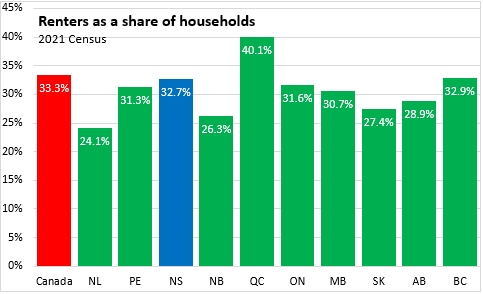
Across Nova Scotia, renters made up a much larger portion of households in Halifax than in other counties. Victoria County reported the lowest share of households that rent.
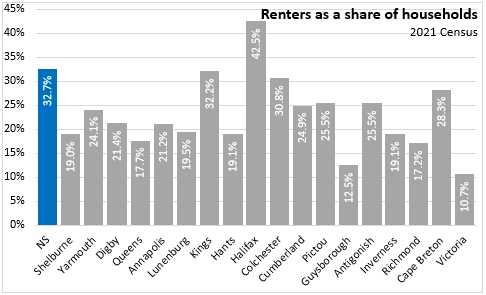
Core housing need refers to households that have housing that is either unaffordable (with costs requiring over 30% of before tax income), unsuitable (in need of repair) or inadequate (too small for family size). Affordability is the most significant contributor to core housing need.
In Nova Scotia, 17.8% of households spent more than 30% of income on shelter. This was lower than the national average of 20.8%. Ontario and British Columbia reported the highest share of households in unaffordable housing while New Brunswick reported the least.
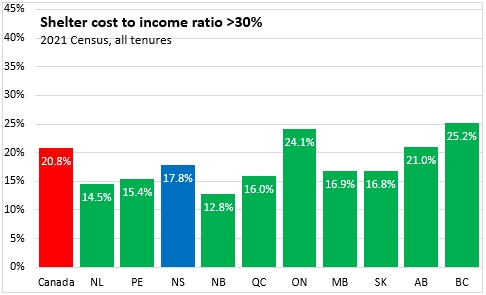
Halifax reported the highest share of the population spending over 30% of income on shelter. Victoria county reported the lowest.
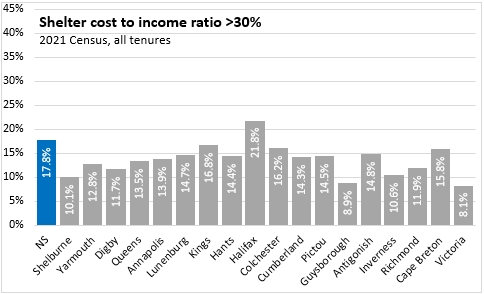
Affordability problems were much more prevalent among renters than among home owners. Only 9.6% of Nova Scotia's home owners reported spending over 30% of their income on shelter (14.8% nationally), including both those with and without mortgages.
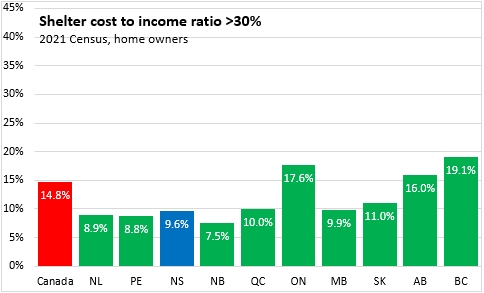
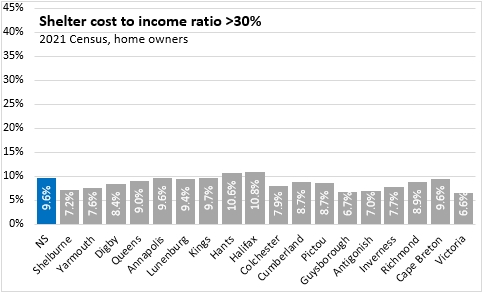
Among renter households, 34.6% of Nova Scotia households reported spending over 30% of income on shelter (32.9% nationally). Nova Scotia's share of renters spending 30% or more of income on shelter was third highest among provinces in 2021 after Ontario and British Columbia. Quebec reported the lowest share of renters spending over 30% of income on shelter.
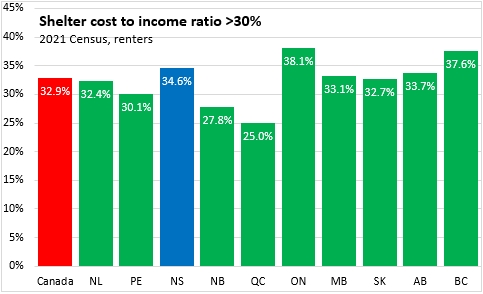
Several counties reported higher prevalence of spending 30% or more of income on shelter: Antigonish, Colchester, Halifax, Lunenburg, Queens.

Considering all criteria (affordability, suitability, adequacy), 26.7% of Nova Scotia's households were in core housing need in 2021. This was lower than the national average of 29.2%. Ontario and British Columbia reported the greatest share in core housing need while Newfoundland and Labrador reported the least.
For most groups, the portion of Nova Scotians in core housing need was below the national average, with the notably exceptions of renters (44.9%) and lone persons not in a census family (40.0%).
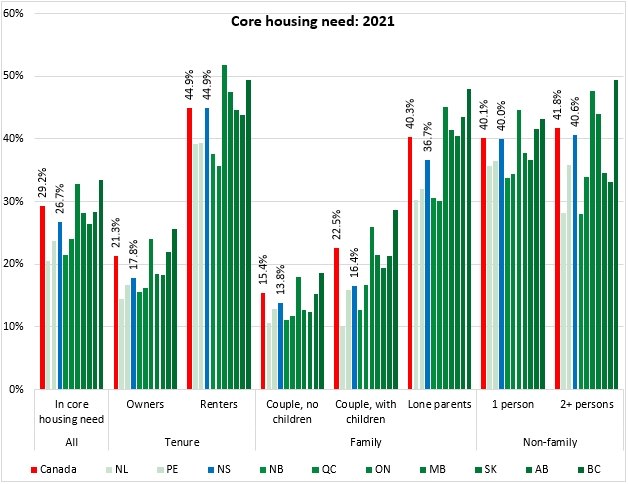
Across Nova Scotia, core housing need was most prevalent in Halifax.

Among home owners, core housing need was slightly higher in Queens, Annapolis, Digby and Cumberland counties.
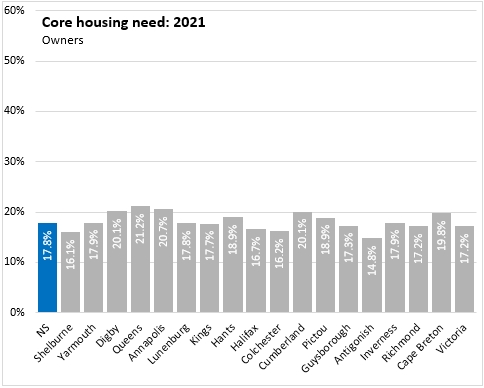
Core housing need among renters was notably higher in every county of Nova Scotia.
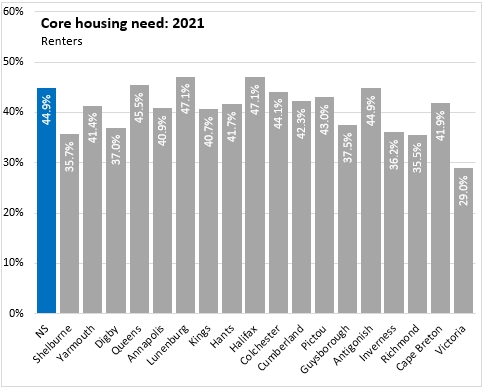
Core housing need was comparatively low among couples, either with or without children in Nova Scotia (not including those with others in the household).
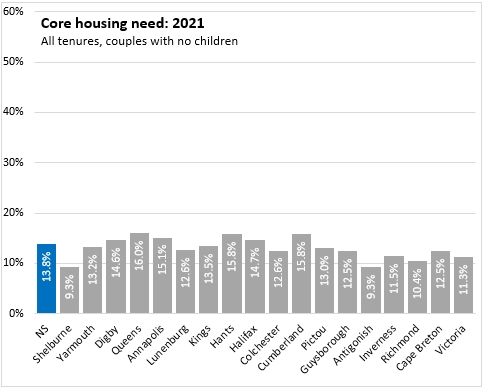
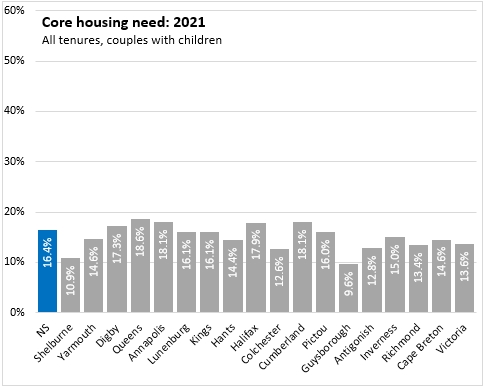
Core housing need was significantly more prevalent among lone parent families (not including those living with others in the household) in every county.
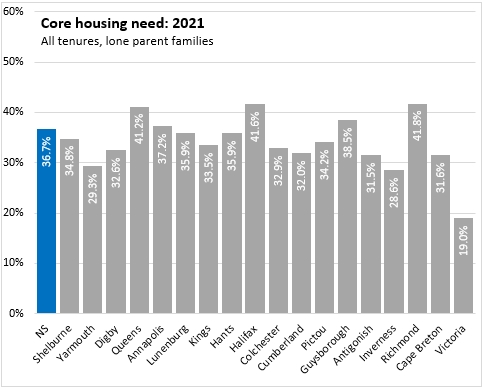
Core housing need was also widespread among persons not in a census family who lived on their own. Core housing need for 2 or more persons not in a census family but sharing a household was somewhat lower, but in Halifax the prevalence of core housing need among 2+ non-census family households was higher.
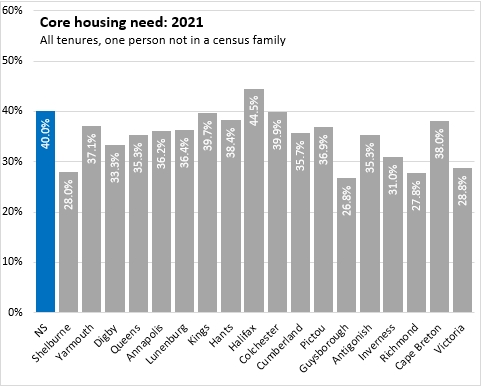
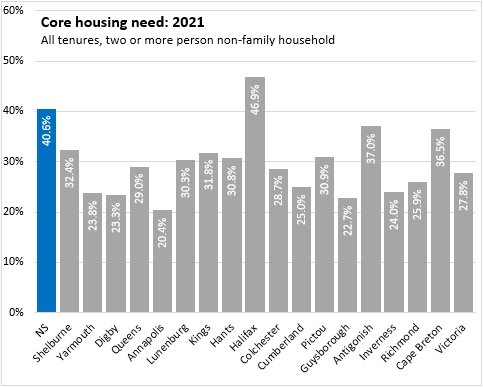
Average and median housing prices (using single-detached dwellings) were notably lower in Nova Scotia than across Canada. Within communities of Nova Scotia, Wolfville and Halifax had the highest median and average house values. The lowest prices among Census Subdivisions with at least 5,000 population were in Cumberland County Subdivision B.
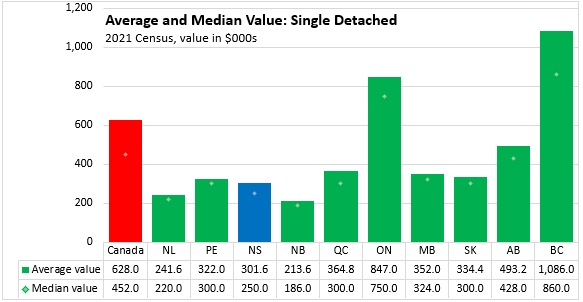
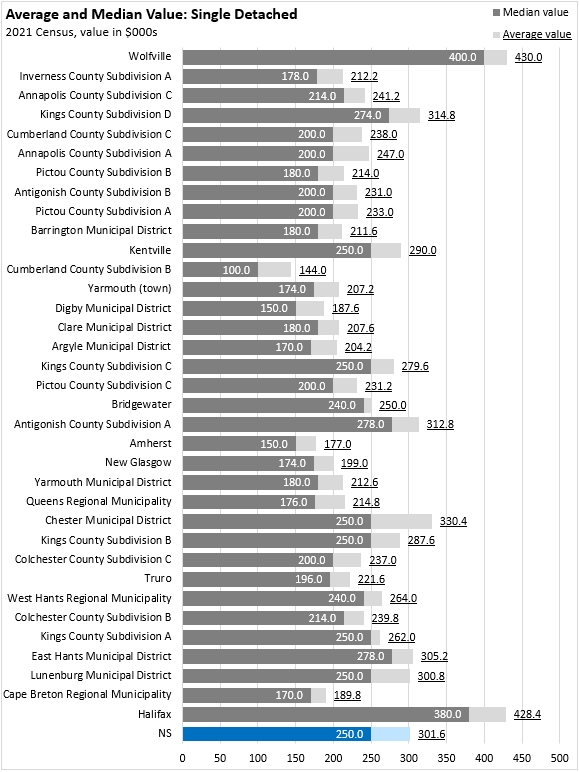
Source: Statistics Canada. Table 98-10-0247-01 Core housing need by tenure including presence of mortgage payments and subsidized housing: Canada, provinces and territories, census divisions and census subdivisions; Table 98-10-0257-01 Value (owner-estimated) of dwelling by structural type of dwelling : Canada, provinces and territories and census subdivisions with a population 5,000 or more; Table 98-10-0255-01 Shelter-cost-to-income ratio by tenure including presence of mortgage payments and subsidized housing : Canada, provinces and territories, census divisions and census subdivisions
<--- Return to Archive